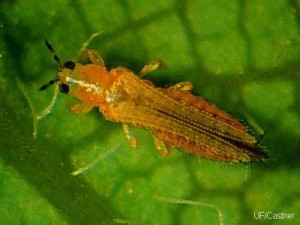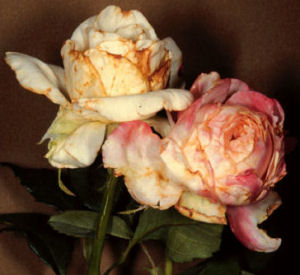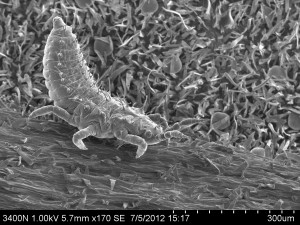Thrips: Biology and Rose Pests
go.ncsu.edu/readext?212961
en Español / em Português
El inglés es el idioma de control de esta página. En la medida en que haya algún conflicto entre la traducción al inglés y la traducción, el inglés prevalece.
Al hacer clic en el enlace de traducción se activa un servicio de traducción gratuito para convertir la página al español. Al igual que con cualquier traducción por Internet, la conversión no es sensible al contexto y puede que no traduzca el texto en su significado original. NC State Extension no garantiza la exactitud del texto traducido. Por favor, tenga en cuenta que algunas aplicaciones y/o servicios pueden no funcionar como se espera cuando se traducen.
Português
Inglês é o idioma de controle desta página. Na medida que haja algum conflito entre o texto original em Inglês e a tradução, o Inglês prevalece.
Ao clicar no link de tradução, um serviço gratuito de tradução será ativado para converter a página para o Português. Como em qualquer tradução pela internet, a conversão não é sensivel ao contexto e pode não ocorrer a tradução para o significado orginal. O serviço de Extensão da Carolina do Norte (NC State Extension) não garante a exatidão do texto traduzido. Por favor, observe que algumas funções ou serviços podem não funcionar como esperado após a tradução.
English
English is the controlling language of this page. To the extent there is any conflict between the English text and the translation, English controls.
Clicking on the translation link activates a free translation service to convert the page to Spanish. As with any Internet translation, the conversion is not context-sensitive and may not translate the text to its original meaning. NC State Extension does not guarantee the accuracy of the translated text. Please note that some applications and/or services may not function as expected when translated.
Collapse ▲Biology
Thrips are tiny insects with fringed wings that can range in size from 0.5mm to up to 14mm [1], although most are only about 1mm in length with slender bodies. Thrips are a diverse group of hemimetabolous insects that have a range of diets consisting of both plant and animal prey, depending on the species in question. These tiny insects feed on

Frankliniella tritici (Fitch); the eastern flower thrips. Photo from University of Florida Entomology.
prey items with rasping-sucking mouthparts that resemble a soda straw. Although thrips possess two mandibles, or jaw-like structures, the right mandible is greatly reduced and vestigial [2]. The left mandible is predominant, and is used to pierce the cell wall of plant tissues [3]. Some species inject an enzyme into food tissues that is used for extra-oral digestion from tubes called stylets in their mandibles [4]. Their bodies are elongate and slender. Some species have fringed wings, making them capable of flight.
Life Cycle
Thrips undergo incomplete development in which they begin their lives as an egg, which may take several weeks to develop, but can hatch in as little as a day [1]. Thrips have two immature stages, in which the insect is wingless.
After the second immature stage, thrips enter a dormant stage in which they are mostly immobile and do not feed [1].
All described thrips species also utilize a form of asexual reproduction called parthenogenesis in which an adult female can lay an unfertilized egg to develop into a genetically identical female offspring [1]. Sexual reproduction seldom occurs in all species of thrips.
Thrips in your rose garden
Thrips are difficult to spot on a rose blossom, as they are generally located at the base of the petals [6]. If you think your rose plants may be impacted by thrips, there are a few steps you can use to monitor for these insects:
- remove a physically healthy blossom from your plant
- peel back the first layer of petals, checking the base of the blossom for tiny brown to orange insects approximately 1/16 inch long
- check for browning areas, which can be especially visible on lighter colored blossoms
- blow gently into the blossom and pay close attention for any small movements within
More overt physical damage of rose plants by thrips can also be present. This damage is generally characterized by deformed buds that may only partially open, or even fall from the plant before full bloom. Thrips feeding on rose petals may also result in a flecking pattern on leaves near the affected buds.

Thrips damage on roses is often more apparent on lighter-colored blossoms. Photo from Clemson University Entomology Extension.
Control
The physical control of thrips in your rose garden, or any agricultural setting for that matter, is often quite difficult. Below are a few precautionary steps that you might take to prevent the further spread of Thrips infestation in your rose garden:
- remove damaged buds and blooms and dispose of them well away from the planting area
- keep weeds and grass trimmed back and away from the base of your rose plants
- in the case of extensive bloom damage, a periodic spray of insecticide prior to thrips entering the rose blooms can be used to suppress Thrips infestations.
Economic Impact
Many thrips species are considered agriculture crop pests due to herbivory of flowers, fruits, leaves and stems of plant commodities of economic importance. Many species are also known to be the only insect vectors of plant Tospoviruses [1], which can cause

Scanning electron micrograph of a thrips nymph feeding on a leaf midvein. Photo author: Murray Gans, Scanning Electron Microscope Blog.
spotting and wilting of the fruit and leaves, reducing market value of the crop in question. The western flower thrips, Frankliniella occidentalis (Pergande) is considered a widespread plant pest worldwide, and is the primary vector of plant Tospoviruses [1]. In a two-year North Carolina State University study on the effect of thrips on peanut plants in Virginia, of symptomatic plants tested for Tomato Spotted Wilt Virus (TSWV, a type of plant Tospovirus), more than 98% of plants tested positive for infection [5].
Management Strategy
Due to the small size of thrips and the confined space of their natural habitat (the inside parts of flowers and tight spaces of plants), control strategies are often limited to chemical pesticides, such as aldicarb and phorate [5]. Some biological pesticides, such as Beauveria bassiana, have been tested as well, but with limited efficacy. Biological control agents are also used, including species of parasitoid wasps, but these insect control agents must be small enough to fit into confined spaces to exhibit active predation. Often, outbreaks of thrips within a host plant species are left unchecked until a point of economic threshold is reached [1], in which insect damage negatively affects profit margins of the commodity in question.
.
References
|
[1] |
L. A. Mound, “THYSANOPTERA: Diversity and Interactions,” Annual Review of Entomology, vol. 50, pp. 247-269, July 2005. |
|
[2] |
D. Grimaldi, A. Shmakov and N. Fraser, “Mosozoic Thrips and Early Evolution of the Order Thysanoptera (Insecta).,” Journal of Paleontology, 2004. |
|
[3] |
C. C. Childers and D. S. Achor, “Structure of the mouthparts of Frankliniella bispinosa (Morgan) (Thysanoptera: Thripidae).,” in Proceedings of the International Conference on Thrips, Radnor, PA, 1989. |
|
[4] |
W. B. Hunter, D. E. Ullman and A. Moore, “Electronic monitoring: characterizing the feeding behavior of western flower thrips (Thysanoptera: Thripidae),” History, Development, and Application of AC Electronic Insect Feeding Monitors, pp. 73-85, 1994. |
|
[5] |
C. A. Hurt, R. L. Brandenburg, D. L. Jordan, G. G. Kennedy and J. E. Bailey, “Management of Spotted Wilt Vectored by Frankliniella fusca (Thysanoptera: Thripidae) in Virginia Market-Type Peanut,” Journal of Economic Entomology, vol. 5, no. 98, pp. 1435-1440, 2005. |
[6] J.M. Scott, “Rose Insects & Related Pests. HGIC Horticulture Extension Department, Clemson University. 2009.


